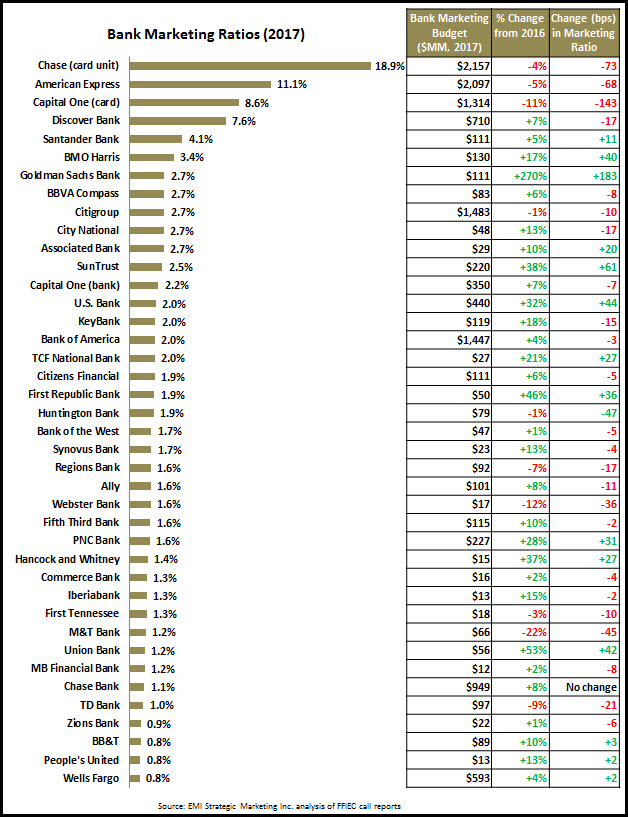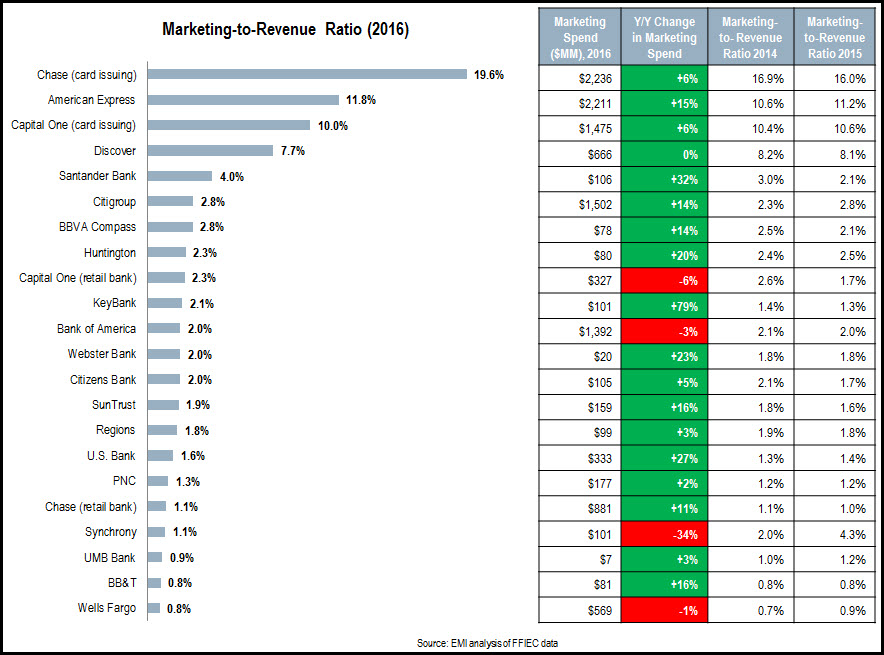There are more than 31 million small businesses (6.0 million employer and 25.7 million nonemployer firms) in the U.S. and the vast majority of banks provide a range of banking services to this segment. However, many banks do not have a dedicated small business marketing programs. This is in part due to the small business segment often falling between two key segments: consumer and commercial.
For banks to effectively grow their small business banking franchise, they need to identify the unique characteristics and financial needs of this segment, and then build an integrated series of marketing initiatives to drive small business awareness, interest and engagement.
The following are 7 areas where banks should focus attention in developing small business marketing initiatives:
- Incorporate small business into bank advertising campaigns. It’s expensive to develop dedicated small business advertising campaigns; only small business finance specialists (such as Kabbage) or the very largest banks do so. However, banks can highlight their commitment to the small business market by featuring small business owners and services in bank-wide brand campaigns.
- Build marketing initiatives and offers around National Small Business Week. National Small Business Week is organized by the U.S. Small Business Administration (SBA) and takes place each year in May. Many banks now celebrate the week with special offers, events and other initiatives targeted toward small business needs.
- Participate in/host dedicated small business events. Many banks speak at, exhibit at or sponsor small business events in their footprints, which helps to position them as a provider of advice and services to small businesses, while also allowing banks to engage directly with small business owners. Banks that have invested significantly in small business events include Chase (which hosts regular Chase for Business Conferences in various cities, most recently in Pasadena and Columbus) and Wells Fargo (which participates in Small Business Expos throughout the country).
- Leverage the branch network. A Mercator survey found that 79% of U.S. small businesses visit a bank or credit union branch at least once a week. Owners also want to create and maintain networks within their local markets. Banks can leverage business owner branch affinity and networking needs by hosting events in their branches. In addition, banks should deploy dedicated small business bankers in larger branches, as well as incorporate small business signage and collateral into all branches.
- Carry out small business surveys. A wide range of banks now carry out regular surveys that both provide a gauge of small business health (optimism, key challenges, opportunities) and reveal small business attitudes toward hot topics (e.g., tax reform, regulations, technology usage). Banks are increasingly publishing findings in more creative formats, such as infographics. It is also worth noting that banks conduct these recurring surveys at different intervals:
- Quarterly: Wells Fargo/Gallup Small Business Index
- Semi-annually: Bank of America Small Business Owner Report (also publishes versions of the survey for 10 key markets); Capital One Small Business Growth Index
- Annually: Chase Small Business Leaders Outlook; SunTrust Small Business Pulse Survey
- Create dedicated small business portals. Most banks have built and branded online small business portals that act as a one-stop shop for small business information and advice. To encourage repeat visits to these portals, banks need to provide a range of content (articles, case studies, podcasts, webinars, videos, infographics) organized around key small business needs or life stages (e.g., starting a business, selling a business), and designed to create an excellent user experience. Prominent small business banking portals include:
- BBVA Bright Ideas for Business
- PNC Small Business Insights
- Santander Bank Business First (also distributes content to opt-in subscribers via a monthly email)
- Wells Fargo Works for Small Business (like Santander Bank, uses email to distribute content to opt-in subscribers)
- Develop a dedicated small business social media presence. Banks can emphasize their commitment to the small business market, as well as promote various small business events, offers and other initiatives, by creating a dedicated small business presence on social media, particularly on Twitter. Banks with dedicated small business Twitter handles include:
- Chase for Business (@ChaseforBiz, 191,851 followers)
- Wells Fargo (@WellsFargoWorks, 57,715 followers)
- Capital One Spark Business (@CapitalOneSpark, 42,318 followers)
- Chase for Business (@ChaseforBiz, 191,851 followers)
With the wide range of marketing options at their disposal, it is vital that banks do not use a scattergun approach to their small business marketing initiatives. Instead, banks should look to create an integrated small business marketing plan that includes goals and objectives, reflects overall bank positioning, has consistent messaging and creative execution, and works in tandem with the bank’s small business sales and service channels.

